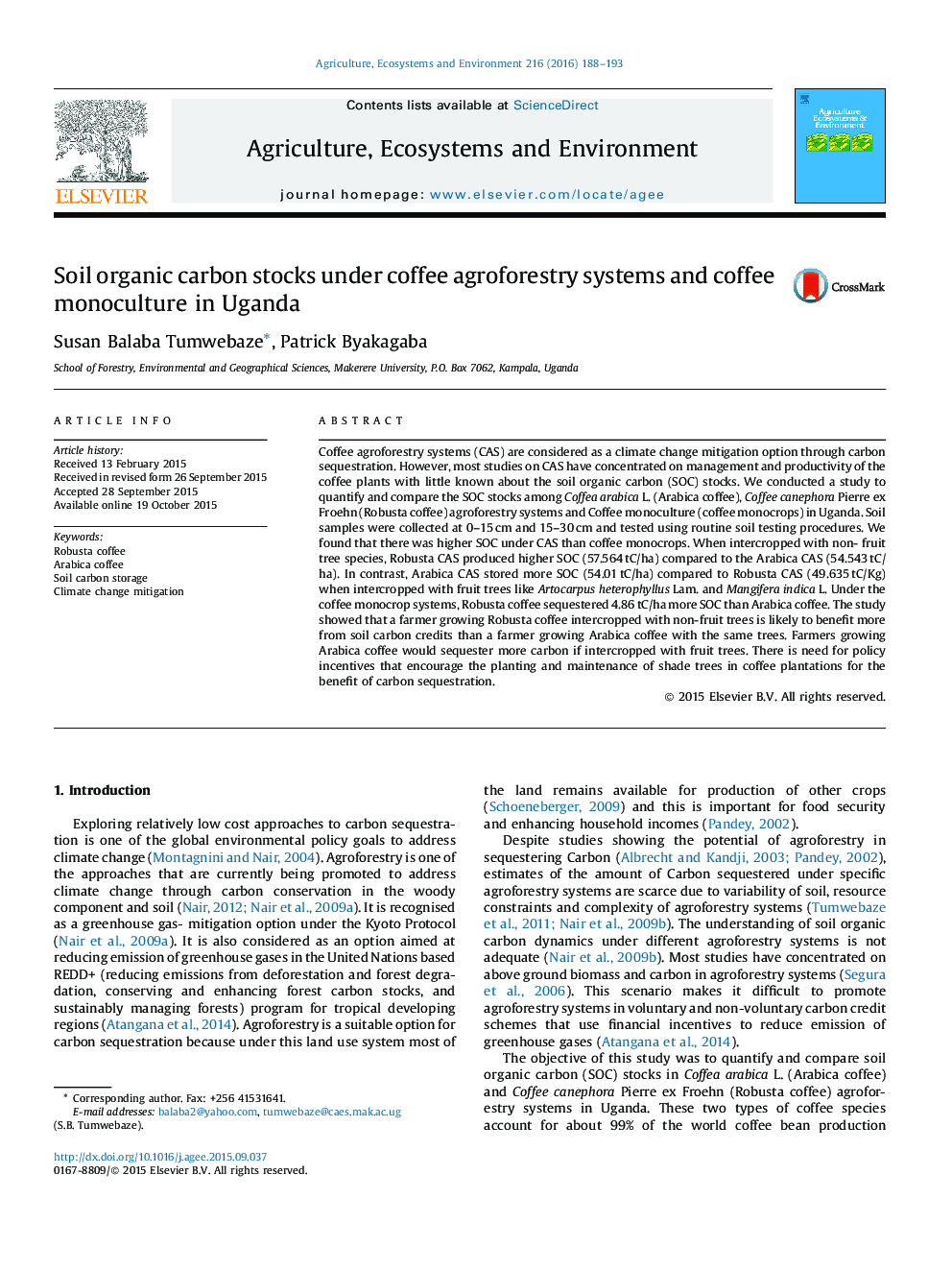| Article ID | Journal | Published Year | Pages | File Type |
|---|---|---|---|---|
| 2413639 | Agriculture, Ecosystems & Environment | 2016 | 6 Pages |
•Coffee agroforestry systems sequester more SOC than coffee monocrop.•Arabica coffee sequesters more SOC when intercropped with fruit trees.•Robusta coffee sequesters more SOC when intercropped with non-fruit trees.•Under coffee monocrop, Robusta coffee sequesters more SOC than Arabica coffee.
Coffee agroforestry systems (CAS) are considered as a climate change mitigation option through carbon sequestration. However, most studies on CAS have concentrated on management and productivity of the coffee plants with little known about the soil organic carbon (SOC) stocks. We conducted a study to quantify and compare the SOC stocks among Coffea arabica L. (Arabica coffee), Coffee canephora Pierre ex Froehn (Robusta coffee) agroforestry systems and Coffee monoculture (coffee monocrops) in Uganda. Soil samples were collected at 0–15 cm and 15–30 cm and tested using routine soil testing procedures. We found that there was higher SOC under CAS than coffee monocrops. When intercropped with non- fruit tree species, Robusta CAS produced higher SOC (57.564 tC/ha) compared to the Arabica CAS (54.543 tC/ha). In contrast, Arabica CAS stored more SOC (54.01 tC/ha) compared to Robusta CAS (49.635 tC/Kg) when intercropped with fruit trees like Artocarpus heterophyllus Lam. and Mangifera indica L. Under the coffee monocrop systems, Robusta coffee sequestered 4.86 tC/ha more SOC than Arabica coffee. The study showed that a farmer growing Robusta coffee intercropped with non-fruit trees is likely to benefit more from soil carbon credits than a farmer growing Arabica coffee with the same trees. Farmers growing Arabica coffee would sequester more carbon if intercropped with fruit trees. There is need for policy incentives that encourage the planting and maintenance of shade trees in coffee plantations for the benefit of carbon sequestration.
